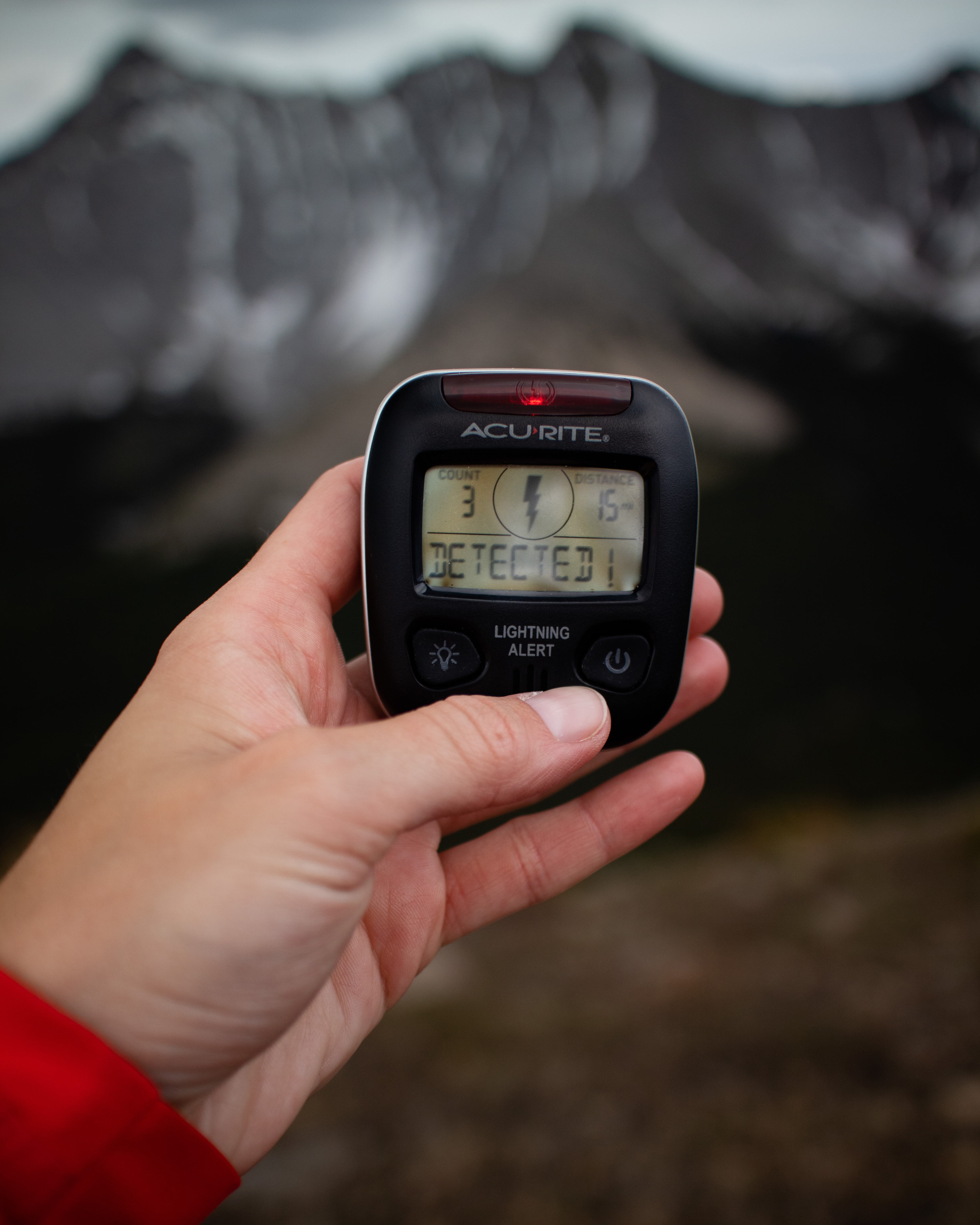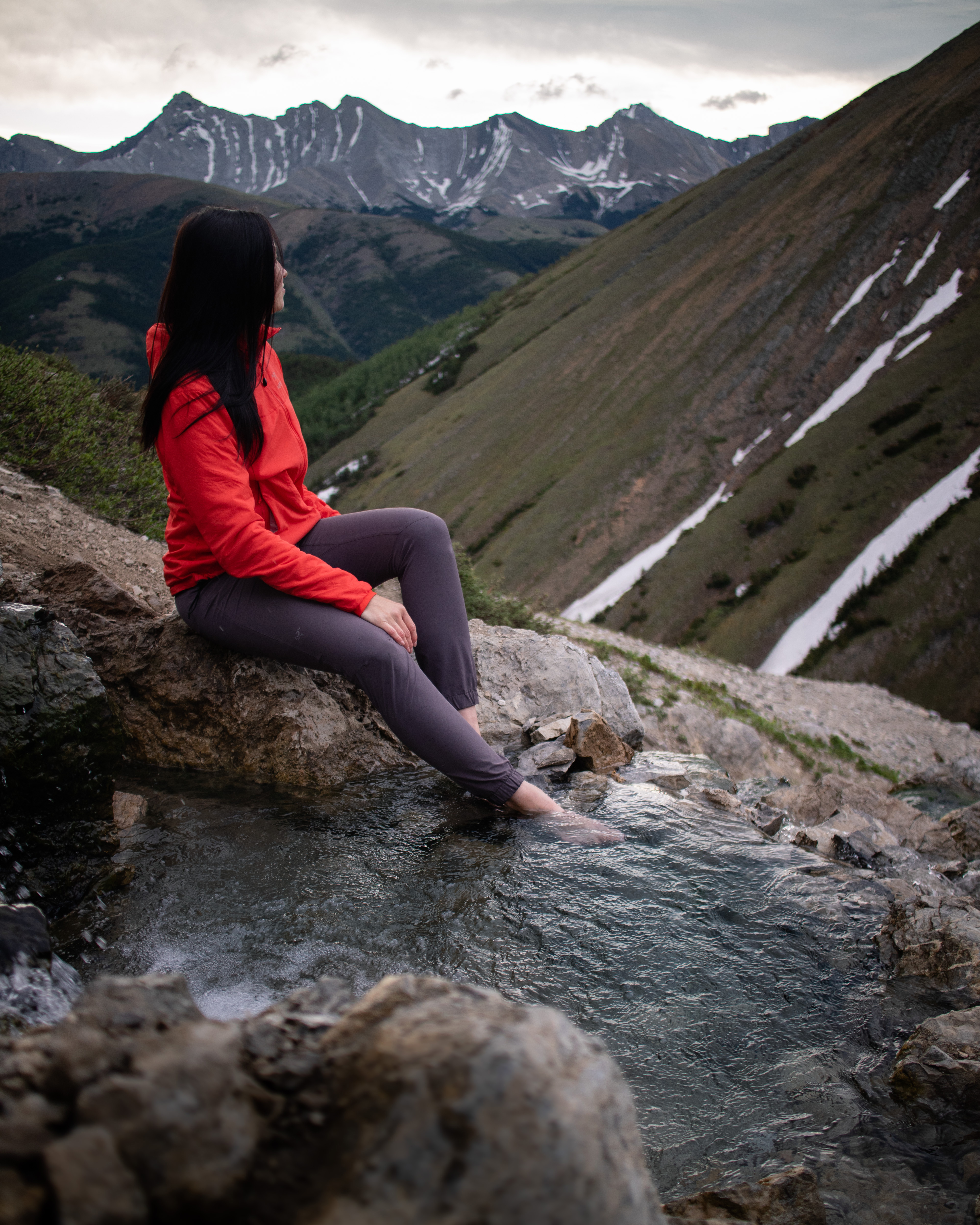Hiking and Lightning: No Thank You
I live in a small town in the beautiful Canadian Rocky Mountains, and to most residents, playing in the hills is worth the high rent and lack of a Costco. There's skiing, biking, kayaking, climbing, and my favorite - hiking. We only get about four months of reasonable hiking weather (that doesn't require snowshoes), so all winter, we meticulously plan trips, hike ideas, and get everything ready for summer: go time.
I've always been a fairweather hiker, which is practically a derogatory term out here; you're tougher if you'll hike through anything! But in the rocky terrain, slips on wet rock can be dangerous, loss of sightlines due to fog or blizzards can result in a night spent on the mountain, and then there's the issue that scared me the most: lightning. To an extent, you can usually schedule day hikes during good weather and avoid most of these issues. But on longer trips, or a day the forecast is wildly wrong, these storms can still pop up, and you always need to be ready for them. Mountain weather is no joke.
Lightning safety while hiking
I only once almost got caught in a thunderstorm. We were halfway up a mountain when we saw a thunderstorm roll in around the corner, already just a couple kilometers away. Because we were above the trees at this point and on the rock, we turned around as soon as we saw it and we were lucky - nothing struck.
I've heard a lot of stories: people with their hair on end, hearing buzzing in the air, and even light ground shocks. I had no idea that lightning can travel several kilometers through the rock and zap you even if you aren't near a strike! The lightning risk on barren terrain like the tops of our peaks increases exponentially with height and exposure, and that's all enough to keep me indoors if I see even one dark cloud.
But here's the problem: being a fairweather hiker in a region with a short summer season does not allow me to maximize my hiking potential! That's why I about lost my mind when I spotted an AcuRite portable lightning detector on an Instagram story.
This thing exists!? Does it work!? Does it mean I can hike on a questionable weather day and still not put myself in serious danger?
To all three of those: YES.

Portable lightning sensor
I've had a lot of cool gadgets and hiking gear over the years, but few I've been as excited about because it relates directly to how much time I can spend in the hills - while not getting into risky situations and maintain my hiking safety. The lightning sensor can detect lightning far away enough that you can't yet hear the thunder - up to 40km (or 25 miles) - and updates distance information with each new strike detected, so you can tell if it's coming straight toward you or moving away. The general rule is "when thunder roars, go indoors,": If you're close enough to hear it, ground currents to reach you.
A couple of days after I got the detector in the mail, I headed out for a solo hike on a whim. We tend to get afternoon thunderstorms in the spring, and it looked highly possible when I got to the trailhead, so I turned on the lightning sensor immediately.
As soon as I hit the tree line and entered the more exposed, rocky terrain, the sensor detected a lightning strike 15km away. There wasn't any rain, wind, or thunder - it was still sunny at this point. I paused, thinking I didn't want to overreact and waited for the next strike to hit - the next one was 5km away about a minute later.

At that point, due to how fast it seemed to be coming toward me, I decided to head downhill. A few more strikes lit up the device, and these were ONE km away. It was right on top of me, and I still couldn't detect any foul weather. If I hadn't had the lightning detector, I wouldn't have sensed anything wrong at all, and likely would have headed up toward the summit.
Since I didn't hear any thunder even within 1km, I figured after that it was intra-cloud lightning, which doesn't strike the ground. Heading down might have been over-cautious, but even if an overhead electrical storm is happening, I'd rather get out of the alpine and onto safer ground. There's also a chance I simply couldn't hear thunder due to other atmospheric factors, but isn't likely for the strikes within 1km.
By the time I got down, a very dark cloud had exposed itself. It had been hiding out of sight behind the mountain I was climbing, and didn't look like something I'd want to be any closer to.
Essential hiking gadget
On another hike, it detected strikes 20km away, and I could see the cloud from the high ridge we were on. We were able to watch it head away from us, confirmed by strikes even further away after that. It was great to know that a) it was moving away, and b) the presence of one storm didn't mean another might be creeping up behind us.
I won't be hiking without this little device any time soon. It's lightweight, portable, and can be instrumental in staying safe and informed about the mountain weather and potential danger around me. It should be a part of every hiker's safety kit, alongside first aid, bear spray, water, GPS, wine in a bag, charcuterie, and cinnamon buns. Wait, what?

If you'd like to follow along with my hiking adventures and see what kind of ridiculous food I haul up a mountain next, give me a follow @marynsimrak on Instagram. Next up, Maryn shares her exciting hiking experience with the portable anemometer and how she uses it for hiking safely.






